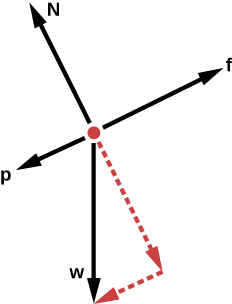| << Chapter < Page | Chapter >> Page > |
Earth’s rotation is slow enough that Earth is nearly an inertial frame. You ordinarily must perform precise experiments to observe fictitious forces and the slight departures from Newton’s laws, such as the effect just described. On the large scale, such as for the rotation of weather systems and ocean currents, the effects can be easily observed.
The crucial factor in determining whether a frame of reference is inertial is whether it accelerates or rotates relative to a known inertial frame. Unless stated otherwise, all phenomena discussed in this text are considered in inertial frames.
All the forces discussed in this section are real forces, but there are a number of other real forces, such as lift and thrust, that are not discussed in this section. They are more specialized, and it is not necessary to discuss every type of force. It is natural, however, to ask where the basic simplicity we seek to find in physics is in the long list of forces. Are some more basic than others? Are some different manifestations of the same underlying force? The answer to both questions is yes, as will be seen in the next (extended) section and in the treatment of modern physics later in the text.
Explore the forces at work when you try to push a filing cabinet. Create an applied force and see the resulting friction force and total force acting on the cabinet. Charts show the forces, position, velocity, and acceleration vs. time. View a free-body diagram of all the forces (including gravitational and normal forces).

An archer shoots an arrow straight up with a force of 24.5 N. The arrow has a mass of 0.4 kg. What is the force of gravity on the arrow?
A cable raises a mass of 120.0 kg with an acceleration of 1.3 m/s2. What force of tension is in the cable?
The force of tension must equal the force of gravity plus the force necessary to accelerate the mass. can be used to calculate the first, and can be used to calculate the second.
For gravity:
For acceleration:
The total force of tension in the cable is 1176 N + 156 N = 1332 N.
A child pulls a wagon along a grassy field. Define the system, the pairs of forces at work, and the results.
Two teams are engaging in a tug–of-war. The rope suddenly snaps. Which statement is true about the forces involved?
(b)
The following free-body diagram represents a toboggan on a hill. What acceleration would you expect, and why?


Notification Switch
Would you like to follow the 'College physics for ap® courses' conversation and receive update notifications?